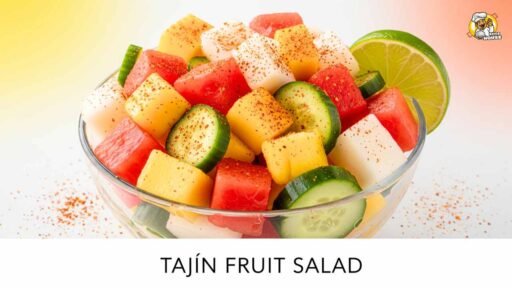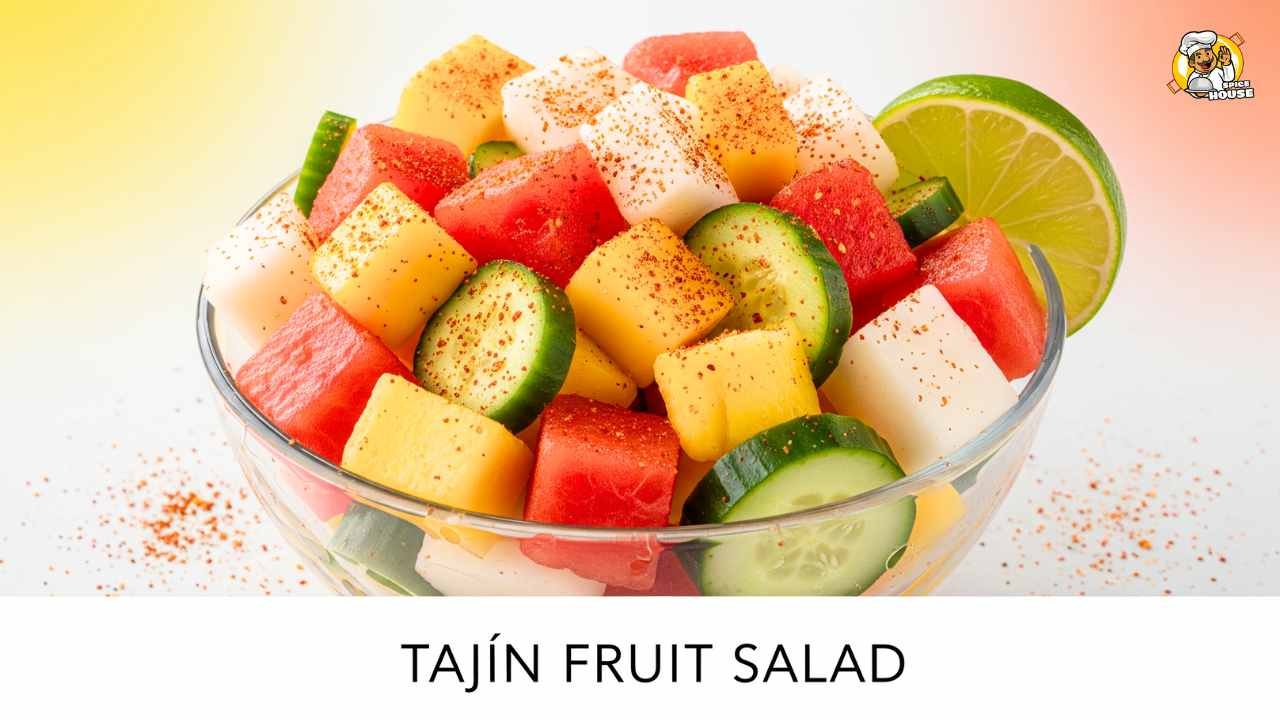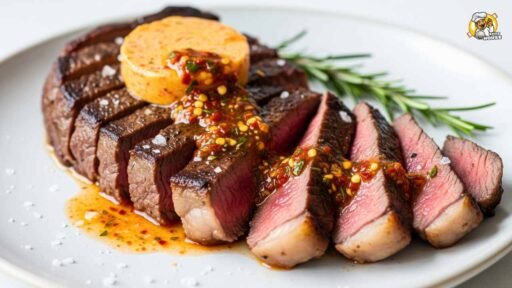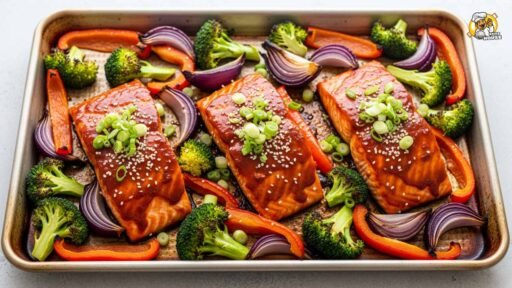Here’s the hard number: Only about 1 in 10 U.S. adults eats enough fruit each day, according to the CDC. And yet, scroll your summer feeds and you’ll see mango, watermelon, and pineapple showered in chile-lime salt, spiked with lime juice, and sometimes streaked with chamoy. The sweet-heat fruit salad—powered by Tajín—isn’t just a vibe; it’s become a seasonal habit, a low-lift way to turn chilled fruit into a crowd magnet.
Still, there’s a friction point. On one side, produce managers, creators, and parents love that Tajín gets people excited about fruit. On the other hand, dietitians flag sodium, and some cultural critics bristle at big brands co-opting Mexican street-fruit culture without context. The trend pulls in shoppers, snackers, and grocers alike—impacting how retailers merchandise the produce aisle, how creators talk about flavor, and how families hit their five-a-day. This smells like a small tweak with outsized ripple effects.
The Data
-
Fruit intake gap: The CDC estimates only about 12% of U.S. adults meet daily fruit recommendations. That’s a stubborn, years-long gap that summer habits alone rarely move.
-
Food waste reality: ReFED’s national analysis finds roughly 38% of the U.S. food supply goes unsold or uneaten each year. Fresh produce is a big slice of that loss. Simple ideas that help people eat fruit sooner—like adding chile-lime and acid to perk up sweetness—can help.
-
Seasoning facts: Per the manufacturer’s nutrition panel, a standard 1/4 teaspoon serving of Tajín Clásico carries about 8% of the daily value for sodium. That’s not a throwaway detail; it’s one reason portion awareness matters when you’re sprinkling with a free hand.
-
Search and social: Google Trends shows summer spikes for “Tajín” and “fruit salad,” peaking around July. On TikTok, the #tajin tag has racked up hundreds of millions of views, with fruit salad and mangonada variations driving repeat engagement. Sources say many grocers are leaning into the wave with produce-aisle shippers and clip-on mini bottles, because it works.
Together, those signals line up: a flavor-first format that nudges fruit intake up, cuts waste by making what’s in the crisper irresistible, and piggybacks on social proof—all while raising fair questions about salt, sugar in some chamoy brands, and who gets credit for the tradition.
Tajín Fruit Salad: Sweet-Heat Summer Fix: Step By Step Guides
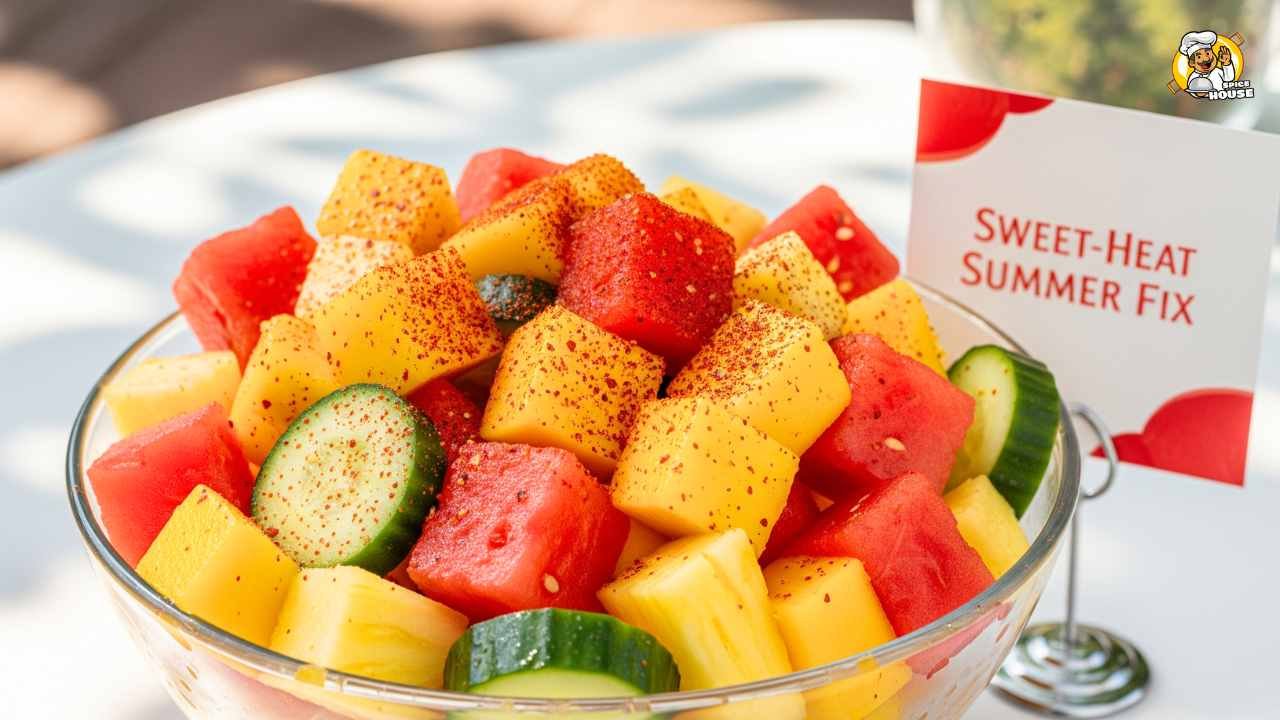
Step 1: Pick Fruit That Loves Heat And Acid
Start with fruit that can stand up to salt and chile while soaking in lime. Think in texture, ripeness, and balance.
-
The sweet anchors: Mango (ripe but not mushy), pineapple (golden flesh, sweet aroma), watermelon (dense and crisp), cantaloupe (ripe, not mealy). These carry the sweetness that makes chile sing.
-
The crunchy foils: Jicama, cucumber, and green apple add snap and dilute intensity so every bite isn’t a sugar rush. They also hold dressing without collapsing.
-
The juicy brighteners: Orange segments, grapefruit, or tangerine provide clean acidity and perfume. Even a handful of halved strawberries can work, but keep them firm.
-
The ratio: Aim for 60% sweet anchors, 25% crunchy foils, 15% brighteners. That mix gives you a layered flavor and keeps the bowl from turning watery.
-
Seasonality matters: In summer, choose watermelon, mango, pineapple, cucumber, and jicama. Outside peak months, lean on citrus, apple, and even roasted or lightly grilled fruit (see step 4) to mimic ripe depth.
-
Yield planning: A generous fruit salad for 6 uses about 8 cups of cut fruit. A medium watermelon yields 10–12 cups; a pineapple, 3–4; two mangos, about 2; one jicama, 3–4. Mix and match to hit your target.
Pro tip: Smell your fruit. If it doesn’t smell like itself, acid and spice alone won’t save it. Choose the best you can, then let Tajín enhance, not mask.
Step 2: Prep Like A Pro: Cut, Size, And Pre-Season
Clean cuts and consistent sizing make this salad feel restaurant-level. The goal: even bites, clean edges, and no fruit soup.
-
Wash and dry: Rinse whole fruits and pat dry. Water on the surface will thin your dressing.
-
Cut sizes: 3/4-inch cubes for watermelon and pineapple; 1/2-inch for mango; matchstick or small batons for jicama and cucumber (skin on for color and crunch). For oranges, separate the segments to remove pith.
-
De-water the juicy ones: Toss watermelon with a tiny pinch of fine salt and set in a colander for 10 minutes. You’ll drain off a cup of liquid that would’ve dulled your spice.
-
Gently season mango: If your mangos are under-sweet, a teaspoon of sugar and a squeeze of lime can coax out juice before the Tajín goes on.
-
Keep textures separate: Hold crunchy components apart from juicy ones until the last minute. Jicama and cucumber stay crisp longer if you don’t let them sit in pooled juice.
-
Chill strategically: Cold fruit takes seasoning better and tastes more refreshing. Chill cut fruit for 20–30 minutes before dressing. Don’t chill after dressing for too long or you’ll mute the aromas.
Pro tip: Mix a tiny “test cup” first. Toss 2–3 bites of fruit with a micro pinch of Tajín and a drop of lime. Adjust the salt/acid curve to your taste before you commit to the big bowl.
Step 3: Build The Dressing: Tajín, Lime, And Just-Enough Sweet
Think of Tajín as the lead actor, with lime juice and a touch of sweetness as the supporting cast. You’re not making a heavy sauce; you’re making a thin, bright sheen that clings to fruit.
Base formula for 8 cups of fruit:
-
2–3 teaspoons Tajín Clásico (start at 2; you can add more later)
-
3 tablespoons fresh lime juice (about 2 limes)
-
1 tablespoon honey or agave (optional; adjust to fruit sweetness)
-
1/2 teaspoon very fine lime zest (optional, for perfume)
-
Pinch of fine salt only if your Tajín sprinkle was light or your fruit is ultra-sweet
Variations:
-
Heat levels: For a kick, add 1/4–1/2 teaspoon ground chile de árbol or cayenne. For smoky depth, 1/2 teaspoon ancho or guajillo powder.
-
Chamoy note: If you love that tangy-plummy note, whisk in 1–2 teaspoons of good-quality chamoy. Many commercial bottles are sugary; check labels and use a light hand so you don’t drown the fruit.
-
Citrus swap: Half lime, half orange or grapefruit juice mellows acidity and adds fragrance.
-
Savory lift: A micro-grate of fresh ginger (1/4 teaspoon) or a few drops of fish sauce with extra lime turns the salad into a side for grilled shrimp or fish. It sounds odd, but the sweet-umami balance works.
How to mix: Whisk the dressing ingredients in a small bowl until the Tajín dissolves. Taste with a chunk of your actual fruit, not a spoon. The dressing should taste a touch too bright and salty on its own; once it hits fruit, it settles into balance. If it tastes perfect off the spoon, it will read flat after you toss.
Step 4: Toss, Chill, And Finish With Crunch And Herbs
Now you bring it together—and add the texture that makes each bite feel designed, not random.
-
Tossing: Combine the fruit in a wide bowl. Drizzle on 2/3 of the dressing and toss gently with clean hands or a wide spatula. Add the rest only if you need it. The fruit should glisten, not swim.
-
Rest time: Let it sit 5–10 minutes so the lime pulls out aroma and the Tajín settles into the flesh. Too long and delicate fruit softens. If your kitchen is hot, rest this in the fridge.
-
Final seasoning: Taste again and adjust. If it needs more heat, sprinkle on more Tajín—not more liquid. If it needs pop, add a squeeze of lime, not more honey.
-
Crunch: Add a handful of roasted, salted pepitas or pistachios just before serving. Tajín’s citrus-chile wakes up toasted seeds in a way that’s a little addictive.
-
Fresh herbs: Cilantro leaves or mint ribbons bring a cooling counterpoint. Add them at the table so they don’t blacken or wilt in the acid.
-
Optional dairy: A crumble of cotija or a dollop of thick yogurt can be lovely for brunch service. Go sparingly so you don’t smother the fruit.
Grill detour: For a cookout twist, grill thick slabs of pineapple or melon 1–2 minutes per side until marked, then cube and proceed. The light char adds smoke that loves chile-lime. You’ll need less sweetener.
Step 5: Plate, Pair, Store, And Scale Without Losing Snap
Presentation isn’t fluff; it shapes how people perceive flavor. So does timing.
-
Plate cold in a shallow layer: Use a chilled platter, not a deep bowl. A low mound gives you more surface area for Tajín’s aroma to hit the nose.
-
Garnish with intention: Lime wedges, a final dusting of Tajín, crushed pepitas, and a few herb leaves. If you’re using chamoy, streak the platter lightly—don’t drench the fruit.
-
Pairings: Sparkling water with a lime wheel; Mexican lager with a squeeze of lime; or a zero-proof agua fresca (watermelon-lime or pineapple-cucumber). The salad plays as a side for grilled chicken, fish tacos, or elote.
-
Make-ahead: Cut fruit up to 8 hours ahead, store in separate containers lined with paper towels, and chill. Dress within 30 minutes of serving. Crunch and herbs go on last-second.
-
Leftovers: Acid keeps working. If you must store dressed salad, keep it in a shallow, airtight container, and eat within 24 hours. Expect softer texture on day two. Or blend leftovers with ice and a splash of lime into a slushy.
-
Scaling up: For a party of 20, you’ll need ~26–30 cups of fruit. Mix in batches so you don’t bruise fruit with heavy tossing. With bigger batches, go lighter on liquid and heavier on sprinkle-style Tajín at the end to keep it vivid.
-
Family-friendly: For kids or low-sodium diets, cut the Tajín with a 50/50 mix of chili powder and fresh lime zest. You’ll keep the color and the heat with less salt.
The People
“A chile-lime sprinkle is the gateway to better fruit,” a longtime produce buyer at a national grocer told me, asking not to be named because he wasn’t authorized to speak on trends. “Put a shipper of Tajín by mangos and cucumbers, and basket size jumps. It’s taste first, health second—but shoppers come back the next week for more fruit.” You can see it on the ground: store-level displays pairing limes, cucumbers, mangos, and Tajín minis; TikTok creators demoing 30-second “snack plates”; and street-fruit vendors doing what they’ve done for decades—chilling, slicing, and finishing with chile, salt, and acid.
Culinary instructors echo the same principle, but from the technical side. Balance is the lever. If the fruit is super sweet, you can push heat and salt; if it’s pale or out of season, go lighter on Tajín and heavier on citrus to wake it up. The method maps to classic culinary logic—season the surface, match intensity, add contrast—and it gives home cooks an easy win.
There’s also a cultural note that matters. Tajín and chamoy come from Mexican traditions of layering fruit with chile, salt, and sour. As the flavors mainstream, insiders want the origin honored: name the roots, support small vendors, and avoid turning an old street snack into a faceless “content hack.” That mix of retail opportunity and cultural respect is the thoughtful middle path. It’s not hard to walk it, but you’ve got to say the quiet part out loud.
The Fallout
So what happens when a seasoning becomes a summer ritual?
-
Retail behavior shifts: Grocers lean into cross-merchandising—clip-on mini bottles in the produce aisle, pre-cut fruit kits with a tiny Tajín packet, and lime endcaps. That small reset can lift produce turns and reduce shrink. If more fruit gets eaten at peak, less ends up wasted, which matters in a category with high spoilage.
-
Category blur: Spicy-sweet crosses lanes. You’ll see it migrate from fruit into beverages, sorbets, and even grill rubs. Expect more co-branded experiments—frozen treats dusted with chile-lime, snack nuts with Tajín-style coatings, sparkling waters with chile-citrus notes. Some will be great; some will be sugar bombs wearing a halo.
-
Health narratives collide: On balance, a chile-lime sprinkle that gets people to eat two extra cups of fruit a week is a win. But dietitians will keep pointing out sodium in liberal sprinkles and added sugar in some chamoys. The smart response is education: portion awareness and label-reading, plus simple DIYs that rely on fresh lime and a measured hand.
-
Cultural accountability: As the flavor profile scales, brands face pressure to credit origin and invest back. That can look like partnerships with Mexican producers, support for street-vendor protections, or at least storytelling that names where the tradition started. Consumers notice; creators amplify both the wins and the misses. The skeptical read is that some companies will ride the trend without the context. The optimistic view: food culture has matured, and the market rewards respect.
-
Creator economy lift: Quick, visual recipes that rely on pantry items and color pop perform. Fruit salad with Tajín is an algorithm’s dream: high contrast, big chunks, one-handed tosses, and the hit of finishing salt on camera. That keeps the flywheel spinning—more videos, more sales, more fruit eaten.
Analysts now predict that “heat-plus-sweet” will keep expanding as a flavor pillar in snacks and at-home cooking for at least the next few summer cycles. It’s inexpensive, it’s flexible, and it lines up with wellness-lite goals—more fruit, more water, less heavy dessert. There’s risk if the category leans too hard into sugary extensions. But the core behavior—buy fruit, cut fruit, season fruit—feels durable because it solves a real problem: making produce craveable on weeknights without turning on the oven.
Closing Thought
If a dusting of chile-lime can move fruit from crisper to table and keep it there, what happens when grocers, brands, and creators all commit to the balance of flavor, health, and credit where it’s due? Will this be the summer a humble sprinkle reshapes the produce aisle playbook, or does the trend hit saturation before retailers institutionalize it?

